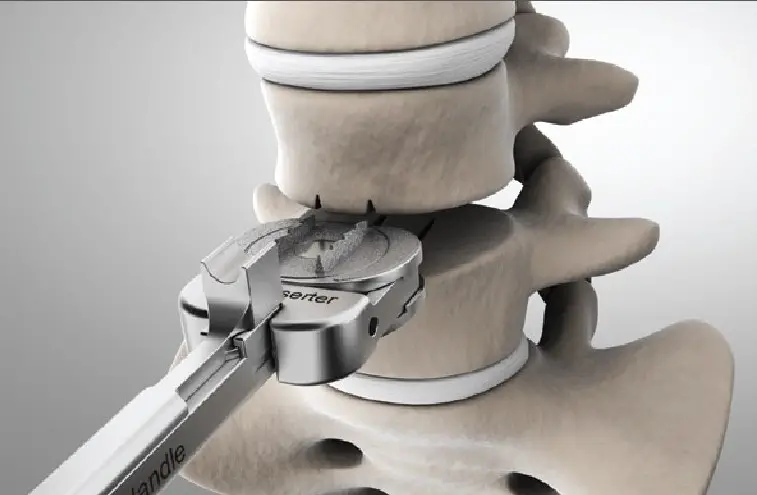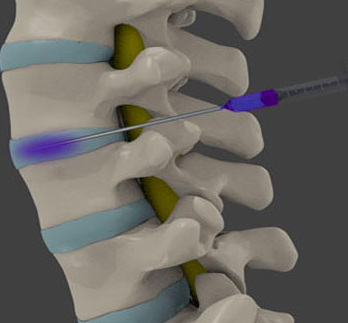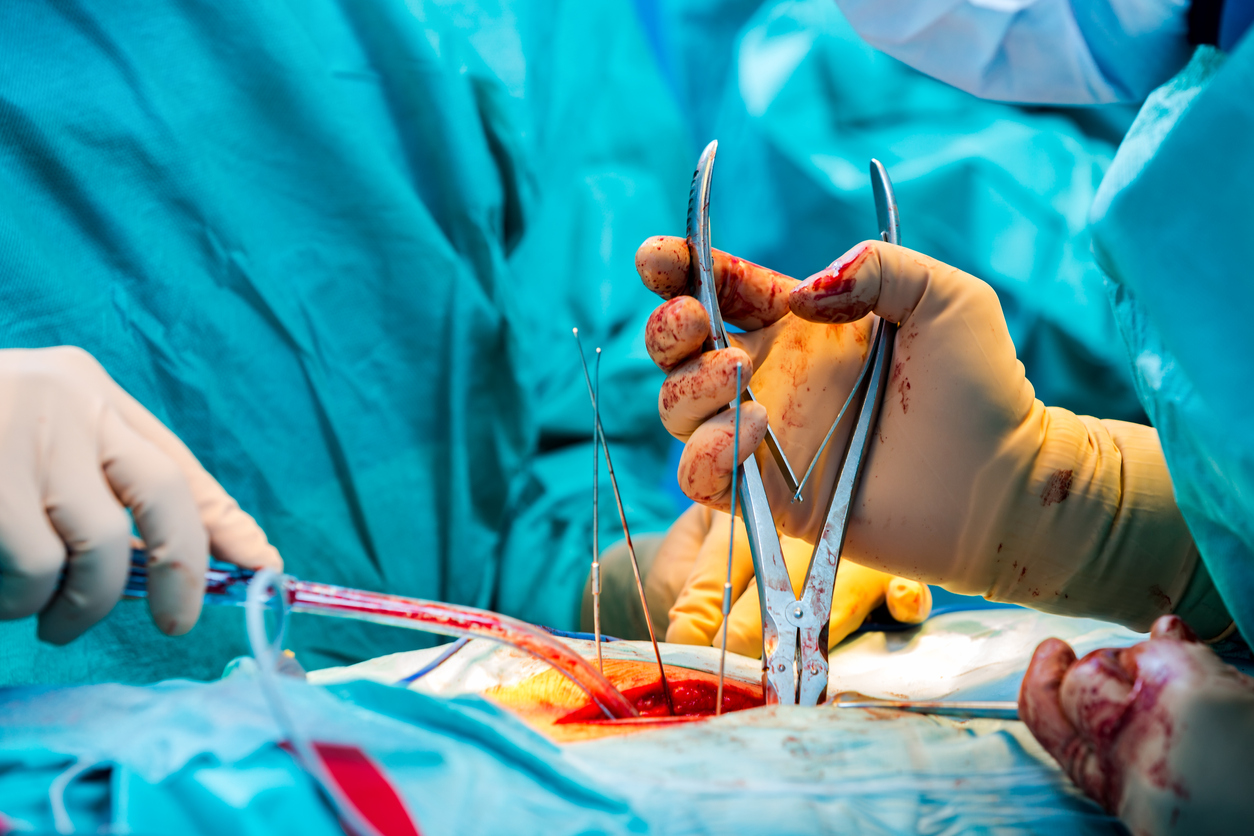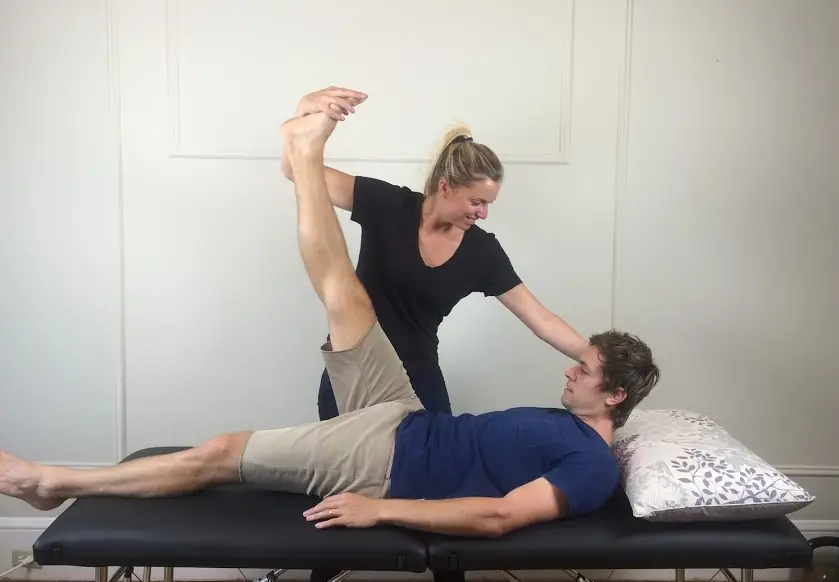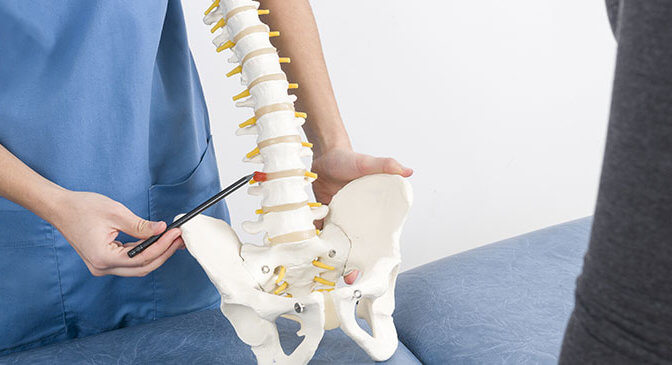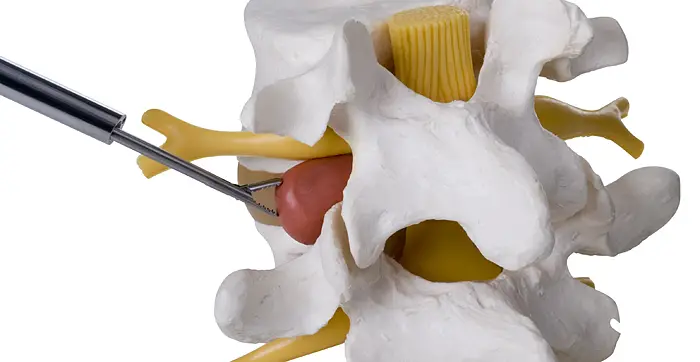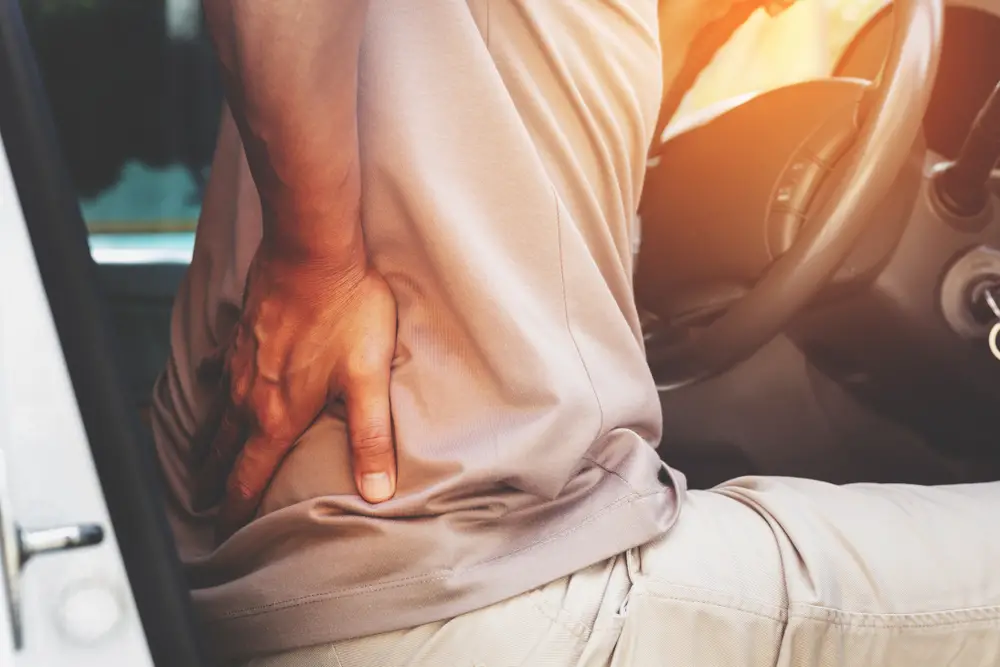Article reviewed and approved by Dr. Ibtissama Boukas, physician specializing in family medicine
Established in the 50s in Sweden, disc prosthesis is a procedure offering several advantages over arthrodesis, another type of surgery to relieve chronic low back pain.
Inspired by the surgeries of total hip prosthesis or knee, it allows the reduction of lumbar pain while preserving the articular amplitude at the level of the spine.
What is the disc prosthesis, and in which cases is it indicated? How is the procedure and rehabilitation going? Are there any risks? This article tells you everything you need to know about this surgery.
Definition
Disc prosthesis is a type of spine surgery.
As a reminder, the spine (or spine) is made up of bones called vertebrae which are stacked on top of each other. The intervertebral discs located between the vertebrae function as cushions that absorb shocks and allow the movement of the vertebrae without friction.
In some cases, disc or spinal degeneration may be noted which causes pain or disability. One thinks in particular of herniated discs and degenerative discopathies.
Normally, any treatment must begin with conservative methods such as medication, physiotherapy or osteopathy. It is only when these modalities prove unsuccessful that more invasive approaches (such as seepage or surgery).
Arthrodesis, the most common surgery
Among the surgeries that can be considered to relieve the symptoms of low back pain, arthrodesis is the most commonly used. Essentially, it's about fusing the vertebrae together in a way that reduces instability and relieves pain. As arthrodesis eliminates all movement of pathological vertebral segments, it is useful regardless of the cause of the symptoms (disc, facet joints, surrounding structures, etc.).
There are a wide variety of surgical options related to arthrodesis, each with its own advantages and disadvantages. More precisely, the approach can be anterior or posterior. The instrumentation used may include implants, rods and/or screws to provide internal structural support while the vertebrae fuse naturally. A bone graft can also be taken from another area, or a synthetic bone graft can be used.
To know everything about thelumbar arthrodesis, see the following article.
The disc prosthesis, an alternative of choice
Although it is a safe and effective procedure in the majority of cases, it should be noted that arthrodesis often leads to increased wear and tear on adjacent areas of the spine. Thus, it can compromise the dynamics and optimal biomechanics of the spine in the long term.
In this perspective, Disc prostheses have been created as alternatives to arthrodesis. In this case, an artificial disc made of metal (or a combination of several materials such as titanium, stainless steel, cobalt, chromium, ceramic, plastic, etc.) is used. Moreover, many models of lumbar disc prosthesis exist but only two are reimbursed in France, unlike the cervical disc prosthesis which is not reimbursed.
This procedure is designed to meet several biomechanical requirements, including tolerance to weight-bearing, reduction of friction and wear, and preservation of range of motion of the spine. It also helps relieve pain by removing the symptomatic disc.
The advantages of disc prosthesis over arthrodesis include:
- Preservation of the height of the discs
- Restoration of mobility to the spine
- Faster healing and recovery after the operation
- Shorter duration of immobilization (brace, if necessary)
- Better long-term biomechanical results for the patient (flexibility and mobility)
- Faster return to work, sport and leisure.
- No wear of adjacent areas of the spine.
Indications and contraindications
As with many other spine surgeries, it is persistent (at least 6 months) and incapacitating pain that has not responded to conservative treatment that suggests the use of a disc prosthesis.
On the other hand, not everyone suffering from low back pain is a candidate for this type of operation. Indeed, here are some specific criteria that would indicate that a patient could benefit from a disc prosthesis:
- Pain from only an injured disc (called discogenic pain)
- Absence of spinal degeneration or nerve irritation
- Absence of excessive overweight or obesity
- No history of spine surgery
- Absence of scoliosis or other spinal deformity
- No progress despite well-conducted conservative treatment for at least 6 months
Conversely, there are conditions where the disc prosthesis is not indicated. Essentially, they refer to conditions where the pain comes from a source other than the disc. Among the contraindications are:
- Osteoporosis or severe osteopenia
- Vertebral body fracture
- Zygapophyseal osteoarthritis or facet
- Segmental instability
- Inflammation and infections
- Spinal ligament damage
- Narrow lumbar canal
- Spondylolisthesis
- Ankylosing spondylitis
- Spinal tumors
Procedure
Before resorting to a disc prosthesis, the doctor must make sure that you are really a good candidate for this type of intervention. This includes a thorough physical examination, blood testsmedical imaging, and/or blood tests.
If it is concluded that you could benefit from a disc prosthesis, you will be informed of the pre-operative instructions. This may include:
- Quit smoking some time before surgery
- Adjust (or temporarily stop) taking certain medications that affect factors such as wound healing, blood clotting, blood sugar, etc.
- Be on an empty stomach a few hours before the operation (do not eat or drink anything)
- Prepare for the post-surgery return home (driver, home help, etc.)
On the day of the operation, you will be put on an anesthetic that will put you into a deep sleep and prevent you from feeling pain (general anaesthetic).
The surgery is usually done anteriorly. This means that you will be lying on your back, and the surgeon will make an incision of about 5-8 centimeters through the abdomen. Your organs and blood vessels will be moved to the side to allow access to your spine.
The first step is to remove the damaged disk (also known as discectomy). Once the disc space has been cleared and prepared, the artificial disc is implanted. Real-time fluoroscopy (x-ray monitoring) is used during the procedure to ensure correct placement of the device.
Finally, the organs and blood vessels are put back in place, and the incision is closed with sutures.
After the procedure, you will be taken to a recovery room for a while to monitor your condition and your response to surgery.
Recovery and rehabilitation
You will probably need to stay in the hospital for a few days after your operation. Since lumbar disc replacement does not require bone healing, the recovery period is faster than with other back operations.
You will be given pain medication if you need it, and you will be encouraged to get up and walk on the first day after the operation. In all, the hospital stay after a disc prosthesis operation is 2 to 5 days.
Initially, you might be prescribed a brace for a period of 6 weeks. Physical therapy sessions could also help you mobilize your trunk and activate your muscles in a progressive and safe way. A return to professional, leisure and sports activities will then be established with the help of your team of health professionals.
In all, recovery after a disc prosthesis lasts about 3 months. This allows time for the spine to get used to the new implanted device, and for the body to recover from the operation. On the other hand, it should be noted that the recovery time varies according to each patient (symptomatology, general condition, history and associated conditions, etc.).
Risks and complications
As it is a surgery, it goes without saying that the disc prosthesis comes with its share of risks. Moreover, this procedure requires deeper access compared to arthrodesis, which makes it a riskier procedure.
On the other hand, complications associated with disc prosthesis have been reduced in recent years thanks to improved surgical methods. Risks of minimal impact include:
- Infection
- Disc prosthesis dislodgement over time
- Blood clot
- Lack of pain relief
- Restriction of spinal mobility
- Retrograde ejaculation
Similar complication rates were observed between lumbar arthrodesis and disc prosthesis. In addition, it should be noted that the frequency of complications was found to be higher when more than one prosthesis had to be implanted in the spine.
Obviously, the orthopedic doctor will make sure to weigh the advantages and disadvantages before any intervention. Indeed, careful selection of patients is crucial to minimize complications after placement of a disc prosthesis. The surgeon will take into consideration your specific condition, general health, symptoms, etc. A patient should always share their concerns with their surgeon before the operation.
Source
- https://www.spine-health.com/treatment/artificial-disc-replacement/lumbar-artificial-disc-surgery-recovery
- https://www.ncbi.nlm.nih.gov/pmc/articles/PMC5435628/

